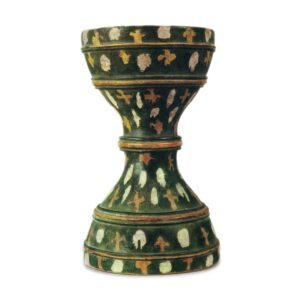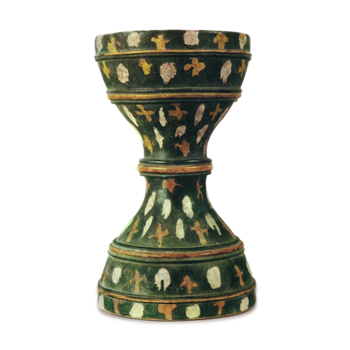
Sansai glazed ware: drum body.
8th century
Height 38.3cm, mouth diameter 21.8cm, body diameter 10.9cm, bottom diameter 22.5cm
Shosoin
This drum was formed by joining two cylinders of the same shape with a widened base. Three convex stripes were placed in the center of the narrow part in the center, and three convex stripes and two convex stripes were placed on the widened parts at both ends. The base is made of well-watered white dense clay with a slightly yellowish surface. The glaze consists of a white glaze applied in a pattern of baby deer spots, four layers of irregular cross-shaped yellow glaze on the top and bottom, and green glaze over the entire surface, with alternating coats of yellow and green glaze on the convex sides.
This tsutsudo is described in the “Todaiji Tsunafunjoumimono Zaimono Kanken Order” dated 1117 (Eternal 5) as a type of thin waist drum used in Tangaku (Chinese traditional music). The drum body is usually made of wood; ceramic ones are rare, and this is the only one with a sansai glaze. Of the Shosoin Sansai glazed drums, only this drum-body was once suggested to have been imported, but research conducted in 1962 confirmed that it was made in Japan.



